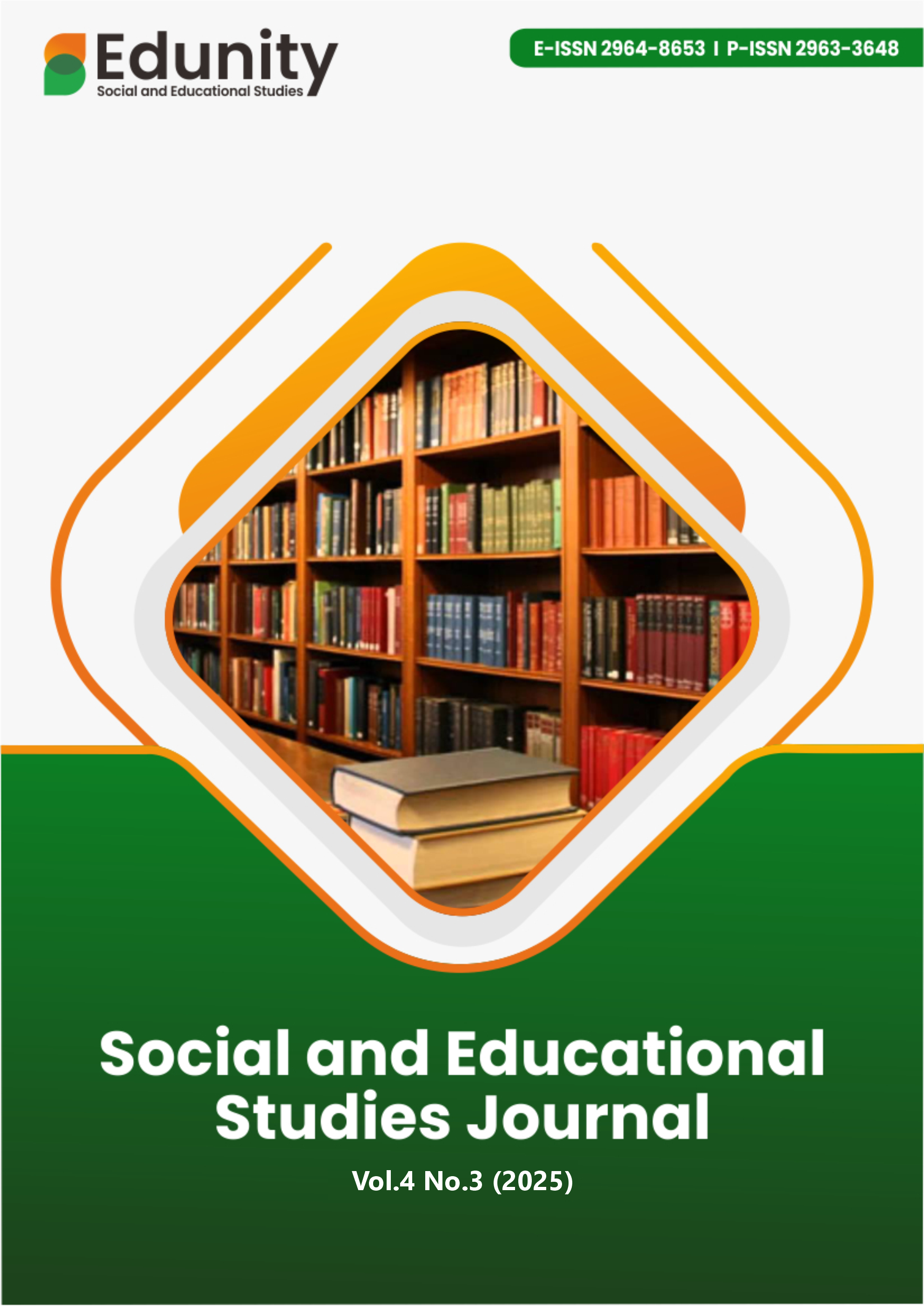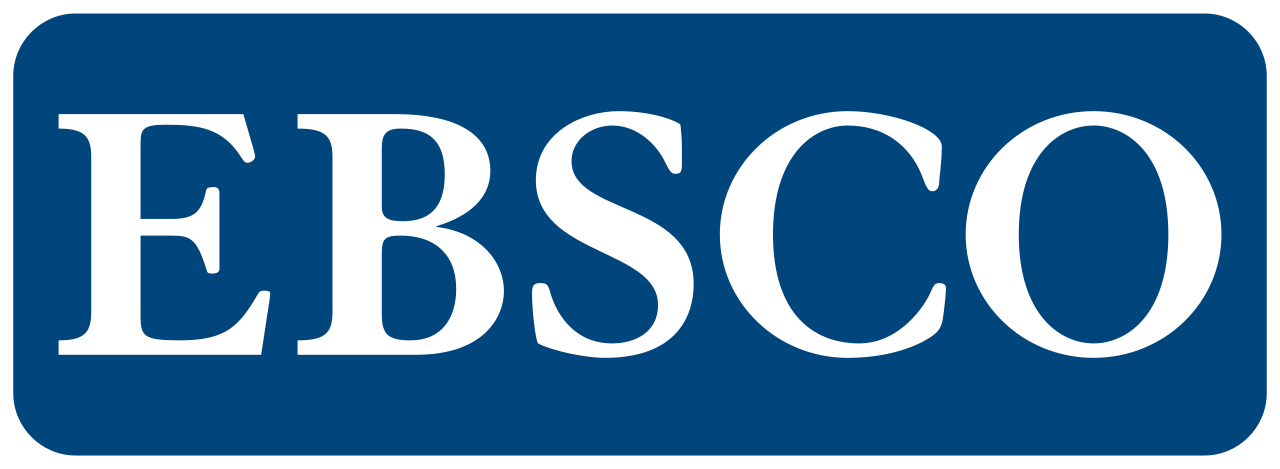Application of The Self-Learning Arena Model to Improve Understanding of Norm Recognition Material in Everyday Life
DOI:
https://doi.org/10.57096/edunity.v4i3.384Keywords:
Learning Arena, Self-Directed, Self-Directed Learning Model, Application of Learning ModelAbstract
At this time, human life is entering a new era: the era of digital industrialization. As a result, various human needs have become increasingly reliant on internet support and the digital world as a vehicle for interaction and transactions. This study aims to analyze the application of the Arena Belajar Mandiri (ABM) learning model in improving students' comprehension skills of the Introduction to Norms in Daily Life material at SMA Negeri 1 Purwadadi. The research method employed a qualitative research approach, specifically a type of classroom action research (PTK). The research subjects consisted of 36 students from class X-3. Data collection techniques using tests and observations. The data analysis technique involved comparing the class average value of the test results from each cycle with classical completeness using a predetermined formula. The results showed that students' understanding of the material of the introduction of norms in everyday life could increase after applying the ABM learning model in cycle I and cycle II. This is indicated by an increase in classical completeness from 22.22% in the initial data to 52.78% in cycle I, and then to 80.56% in cycle II. Thus, this research concludes that the application of the Arena Belajar Mandiri (ABM) model can improve students' comprehension skills.
References
Aksan, H. (2023). Kamus Bahasa Indonesia: Kosakata Lengkap Disertai Pemaknaan Secara Tepat. Nuansa Cendekia.
Aksel, H., Eren, S. K., Çakar, A., Serper, A., Özkuyumcu, C., & Azim, A. A. (2017). Effect of instrumentation techniques and preparation taper on apical extrusion of bacteria. Journal of Endodontics, 43(6), 1008–1010.
Churohman, M. (2019). Tantangan Guru PPKN Di Abad 21 Dalam Mendidik Siswa Generasi Z. Surakarta: Universitas Sebelas Maret.
David, H. (2022). Digital immigrants, digital natives, and digital learners: Where are we now? Journal for the Education of Gifted Young Scientists, 10(2), 159–172.
Fajar, A. (2024). Implementation of Social Studies Learning at Cimahi City Junior High School Post-Covid-19 Pandemic. Forum Ilmu Sosial, 51(1).
Fajar, A., Hendrawan, J. H., & Halimah, L. (2024). Comparison of the Implementation of the Independent Curriculum in Social Studies Learning in Moving and Non-Moving Schools in Cimahi City (Case Study At SMPN 11 AND SMPN 15 Cimahi). Proceedings of the International Conference on Social Studies Education (ICoSSE), 1(1), 1–10.
Ferreira, C. O. (2019). Copyright© 2019 Carolin Overhoff Ferreira This paperback/e-book edition was first published in 2019.
Fikri, M. I. (2022). Pengaruh Model Pemblajaran Sole Terhadap Pengembangan Eterampilan Abad 21 Pada Siswa Sekolah Menengah Atas (SMA). Literasi: Jurnal Ilmiah Pendidikan Bahasa, Sastra Indonesia Dan Daerah, 12(2), 147–155.
Gustina, G., Bundu, P., & Haling, A. (2023). Literature Study: Implementation of Self-Organized Learning Environments (SOLE). Proceeding International Conference on Malay Identity, 4, 152–156.
Leat, D., Crawley, E., Wall, K., Dolan, P., & Mitra, S. (2011). Using observation and pupil feedback to develop a SOLEs (Self Organised Learning Environments) curriculum. European Conference on Educational Research (ECER).
Marlina, E. (2021). The transformation of English teaching strategy during the COVID-19 pandemic. IAIN Palangka Raya.
Meesuk, P., Sramoon, B., & Wongrugsa, A. (2020). Classroom action research-based instruction: The sustainable teacher professional development strategy. Journal of Teacher Education for Sustainability, 22(1), 98–110.
Mitra, S. (2015). Self-Organized Learning Environment (SOLE) Toolkit. Diakes Pada, 17.
Mitra, S., & Crawley, E. (2014). Effectiveness of self-organized learning by children: Gateshead experiments. Journal of Education and Human Development, 3(3), 79–88.
Mitra, S., & Quiroga, M. (2012). Children and the Internet: A preliminary study in Uruguay. International Journal of Humanities and Social Science, 2(15), 123–129.
Ningrum, E., Mamat Ruhimat, A. Y., & Nandi, N. (2018). Evaluation of Workshop Specific Subject Pedagogy (SSP) System Learning on Teacher Profession Education Post SM3T Force 4 in Indonesia Education University.
Rahayu, A. P. (2021). Application of the SOLE (Self Organized Learning Environments) Learning Model in Improving Student English Learning Outcomes. Jurnal Paradigma, 13(2), 168–176. https://doi.org/10.53961/paradigma.v13i2.90
Saputra, D. B., & Takaya, R. (2025). Analisis strategi procurement dalam meningkatkan efisiensi operasional pt halliburton. Nusantara: Jurnal Ilmu Pengetahuan Sosial, 12(2), 545–553. https://doi.org/10.21070/jees.v5i2.869
Schugurensky, D., & Wolhuter, C. (2020). Global citizenship education in teacher education. Theoretical and Practical Issues. Abingdon–New York: Routledge.
Selwyn, N. (2016). Minding our language: Why education and technology is full of bullshit … and what might be done about it. Learning, Media and Technology, 41(3), 437–443. https://doi.org/10.1080/17439884.2015.1012523
Suciati, S. (2021). Penerapan Model Pembelajaran Self Organized Learning Environments (SOLE) untuk Meningkatkan Pemahaman Materi Polimer. Ideguru: Jurnal Karya Ilmiah Guru, 6(3), 321–328.
Sulaksana, G. K. A., & Mahadewi, L. P. P. (2022). Pembelajaran di era revolusi industri 4.0: E-Learning pada mata pelajaran pendidikan kewarganegaraan untuk siswa kelas x. Jurnal Edutech Undiksha, 10(1), 135–145.
Suwandi, M. S. D., Asnar, A., & Warman, W. (2021). Implementation Of The Self-Onized Learning Environment (Sole) Model In An Effort To Increase Creativity In Learning Outcomes In Class Viii C Civics Learning At Smp Negeri 28 Samarinda. Unmul Civic Education Journal, 4(1), 60–67. https://doi.org/10.30872/ucej.v4i1.1263
Waridah, E. (2021). Kamus Bahasa Indonesia. https://play.google.com/store/books/details?id=nlJBDwAAQBAJ&source=gbs_api
Downloads
Published
Issue
Section
License
Copyright (c) 2025 Neneng Kaniawati*, SunarsoAuthors who publish with this journal agree to the following terms:
- Authors retain copyright and grant the journal right of first publication with the work simultaneously licensed under aCreative Commons Attribution-ShareAlike 4.0 International (CC-BY-SA). that allows others to share the work with an acknowledgement of the work's authorship and initial publication in this journal.
- Authors are able to enter into separate, additional contractual arrangements for the non-exclusive distribution of the journal's published version of the work (e.g., post it to an institutional repository or publish it in a book), with an acknowledgement of its initial publication in this journal.
- Authors are permitted and encouraged to post their work online (e.g., in institutional repositories or on their website) prior to and during the submission process, as it can lead to productive exchanges, as well as earlier and greater citation of published work.








